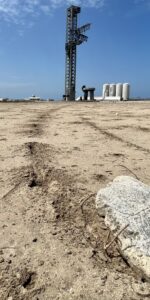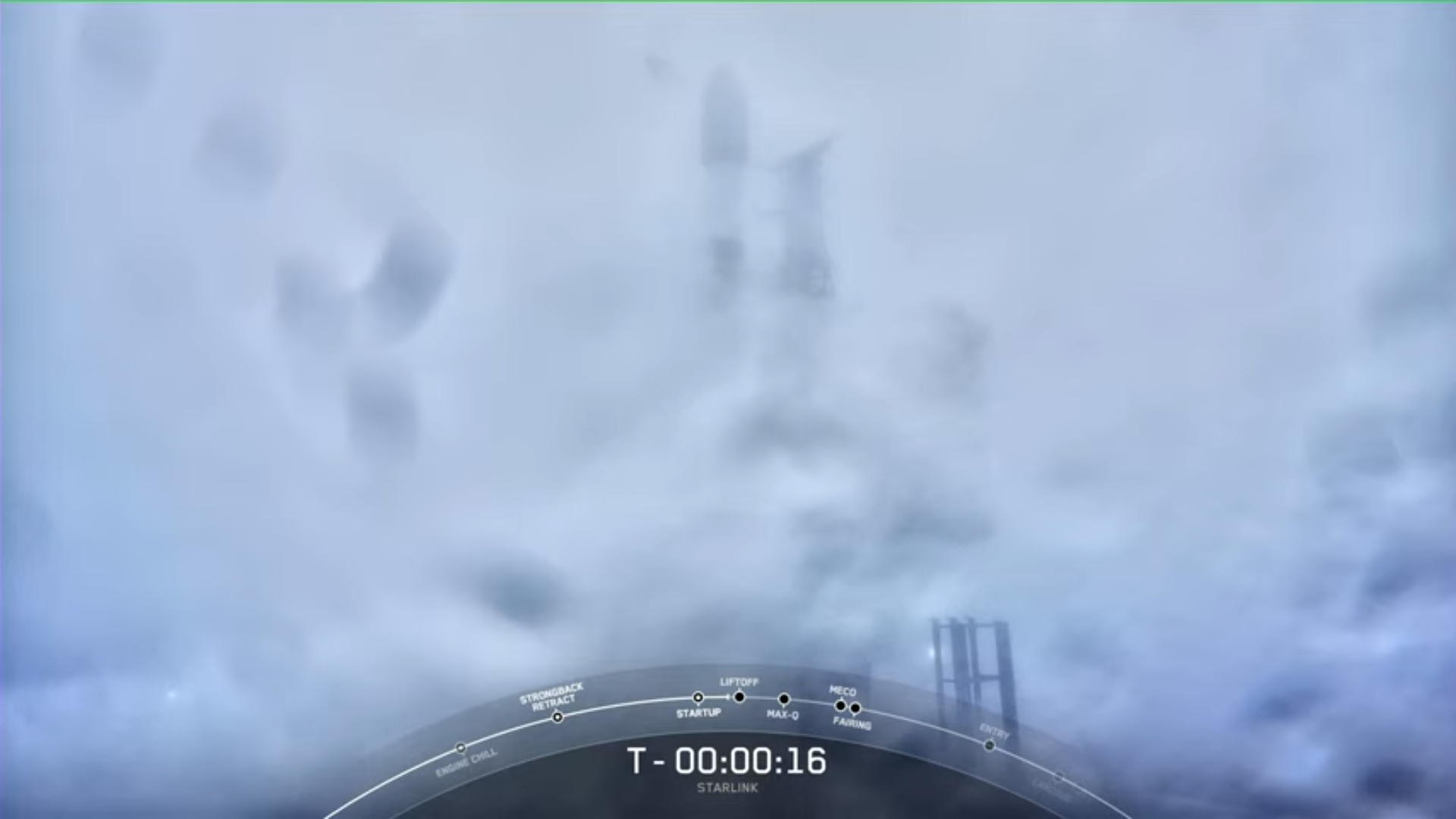
Citing a “probability of landing failure”, the year’s 13th batch of Starlink satellites and the 13th mission of a fleet-leading Falcon 9 must wait at least another 24 hours to fly, following Wednesday morning’s scrub at T-16 seconds. The veteran B1061 core—which previously supported 12 launches between November 2020 and last month—had enjoyed an apparently faultless countdown and fueling operation on fog-enshrouded Space Launch Complex (SLC)-4E at Vandenberg Space Force Base, Calif., before an abrupt “Hold, Hold, Hold” call echoed over the communications net.
This mission, laden with 46 Starlink internet communications satellites, destined for emplacement into low-Earth orbit, had already been moved 24 hours to the right from its original T-0 early on Tuesday morning to Wednesday morning. And despite the presence of thick fog at Vandenberg, weather was “looking good”, according to SpaceX in a tweet, and following today’s scrub the propellants will be removed from the vehicle, as teams recycle for another try at 6:40 a.m. PDT (9:40 a.m. EDT) tomorrow.
The reason for today’s scrub—“probability of landing failure”—seemed at odds with a subsequent SpaceX tweet that “vehicle is healthy”, although very little additional detail was forthcoming. After boosting the Falcon 9 uphill for the opening 2.5 minutes of launch, B1061 was expected to target an on-point touchdown on the Autonomous Spaceport Drone Ship (ASDS), “Of Course I Still Love You”, situated about 390 miles (630 kilometers) offshore in the Pacific Ocean. The drone ship departed Port of Long Beach last weekend.
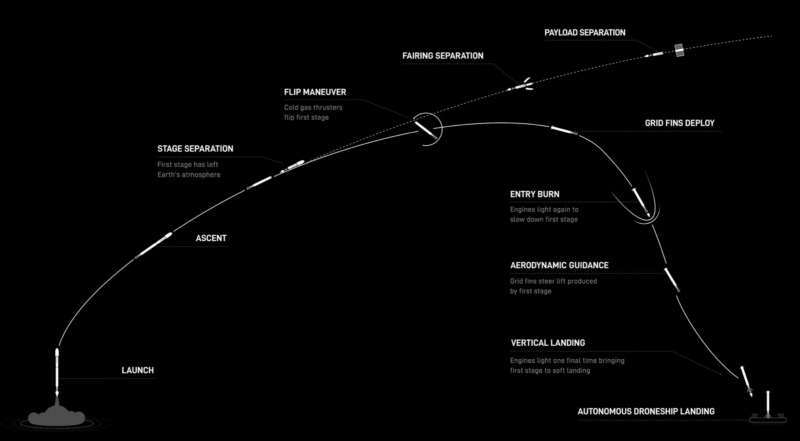
Since January 2015, SpaceX has made 154 tries to land Falcon 9 or Falcon Heavy hardware on oceanic drone ships, with ten outright failures, most recently the February 2021 loss of B1059. Causal factors ranged from hard impacts to excessive lateral velocities during final approach to the ASDS and from problems with latches in the Falcon 9’s landing legs to propellant shortfalls during the Landing Burn.
With launch now rescheduled for tomorrow morning, this mission is SpaceX’s eighth out of mountain-ringed Vandenberg so far in 2023 and will mark the first time that the organization has flown three West Coast missions in a single calendar month. Two previous flights—the inaugural Tranche-0 of the Transport and Tracking Layer (TTL) for the Space Development Agency (SDA) at the start of April and the 51-payload Transporter-7 “rideshare” mission at mid-month—have already added to a growing hive of activity from Vandenberg since the dawn of the year.
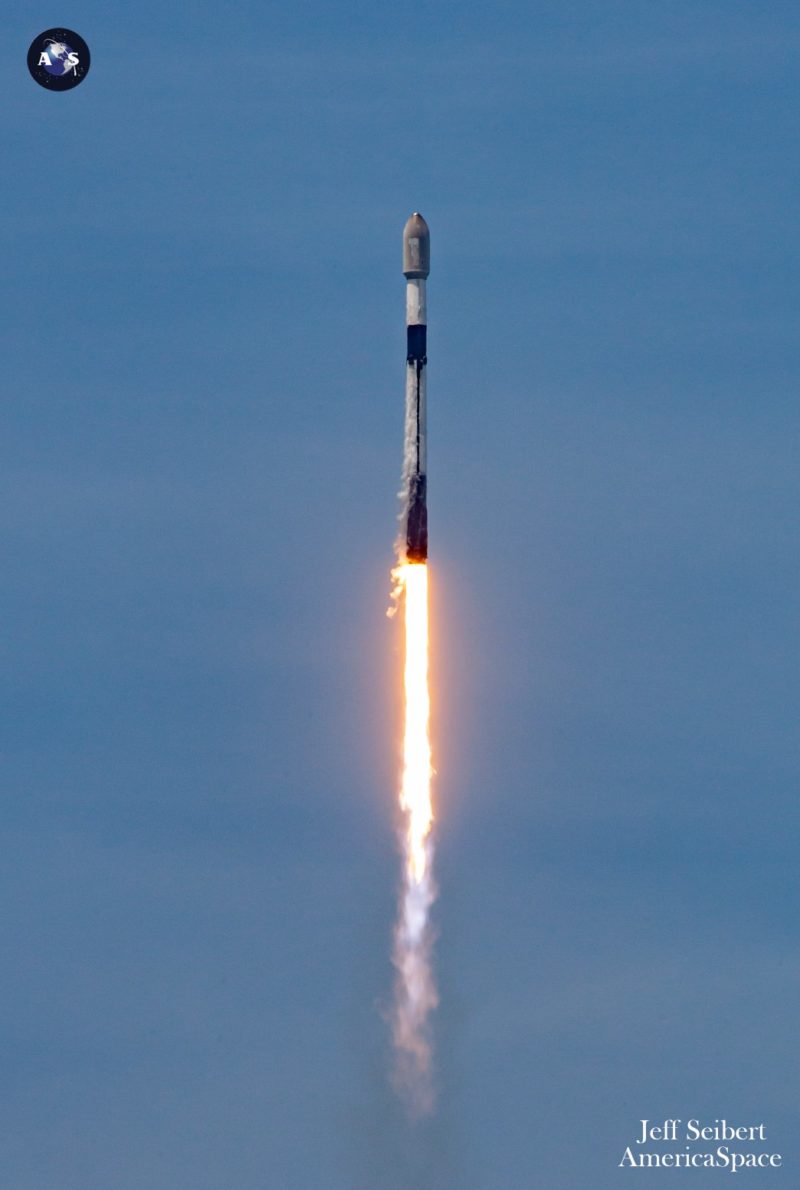
Attention now turns to the Space Coast, which has seen a comparatively quiet April so far, with only two launches—the heavyweight Intelsat 40e geostationary communications satellite with NASA’s “hosted” Tropospheric Emissions: Monitoring of Pollution (TEMPO) and a Starlink mission last week—executed thus far, and over a month since historic Pad 39A at the Kennedy Space Center (KSC) last saw service. A triple-barreled Falcon Heavy was rolled out to 39A for a pre-launch Static Fire Test on 13 April, with hopes that it might fly as soon as the 18th, but a week-long delay was effected reportedly on account of the need to change out at least one Merlin 1D+ engine.
The Heavy was returned to the pad early Wednesday and elevated vertical with the aid of the Transporter-Erector (TE), targeting a 57-minute “launch window” which opens at 7:29 p.m. EDT. The triple-barreled rocket boasts a brand-new center core and two blackened side-boosters with nine prior flights between them.
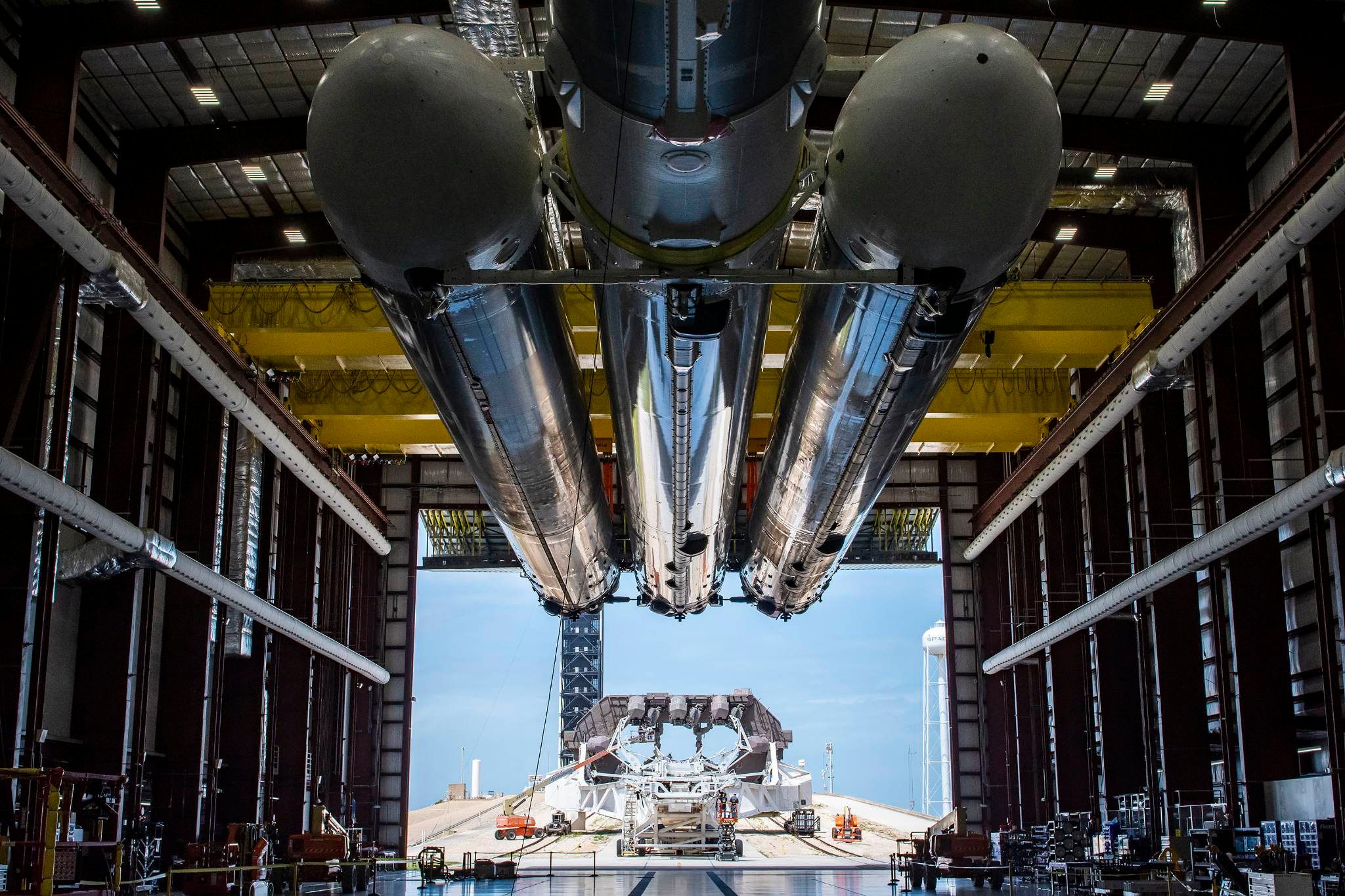
For the first time on tonight’s mission, the entire “business end” of Heavy—core and side-boosters—will be intentionally expended, due to the high-energy requirements needed to insert its primary payload only 700 miles (1,100 kilometers) below Geostationary Earth Orbit (GEO). And that payload is the first of three ViaSat-3 ultra-high-capacity broadband satellites, flying on behalf of Carlsbad, Calif.-headquartered ViaSat, Inc., and co-manifested with a pair of smaller geostationary payloads for Indonesia’s Pasifik Satelit Nusantara (PSN) and San Francisco, Calif.-based Astranis Corp.
In a spot of better news, the weather prospects for tonight’s launch have notched up marginally from 30-percent to around 50-50, according to a L-0 update issued Wednesday morning by the 45th Weather Squadron at Patrick Space Force Base. Conditions are expected to improve yet further to 60-percent-favorable for a backup T-0 on Thursday.
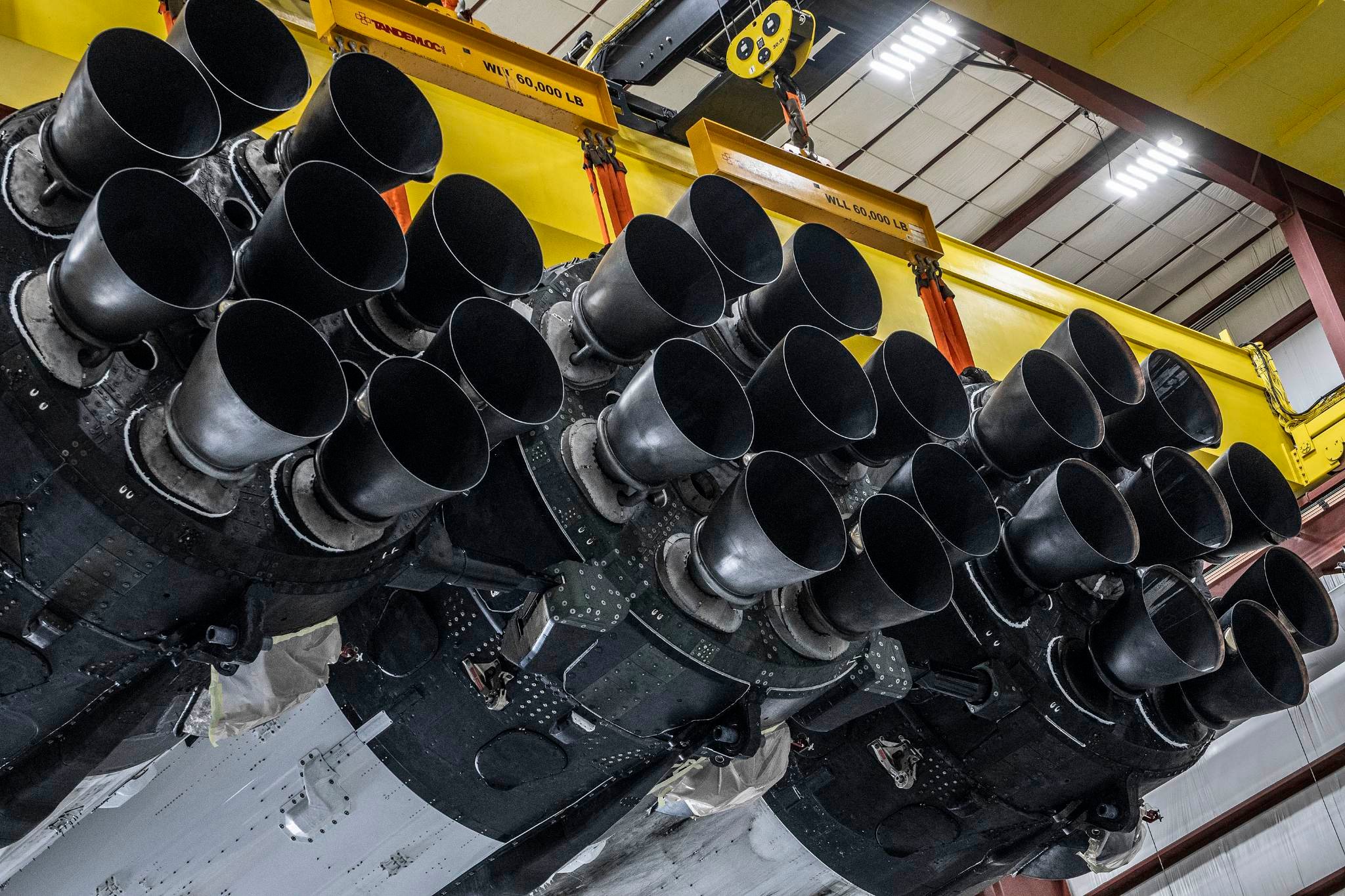
Following the progress of an upper-level disturbance across the northern Gulf of Mexico, the 45th cautioned rocket-watchers to expect storms over the Spaceport from midday through Wednesday afternoon. But “weak inverted surface trough along the coast, induced by the stalled boundary to the north, will give an extra boot to the sea-breeze, which should help shift most storms inland of the Spaceport by early this evening,” it added.
“With the additional upper-level support, a few showers or storms lingering in the vicinity can’t be ruled out,” the 45th continued. “However, the main weather concern will be associated with any anvil clouds streaming back across the Spaceport from ongoing convection to the west.”





